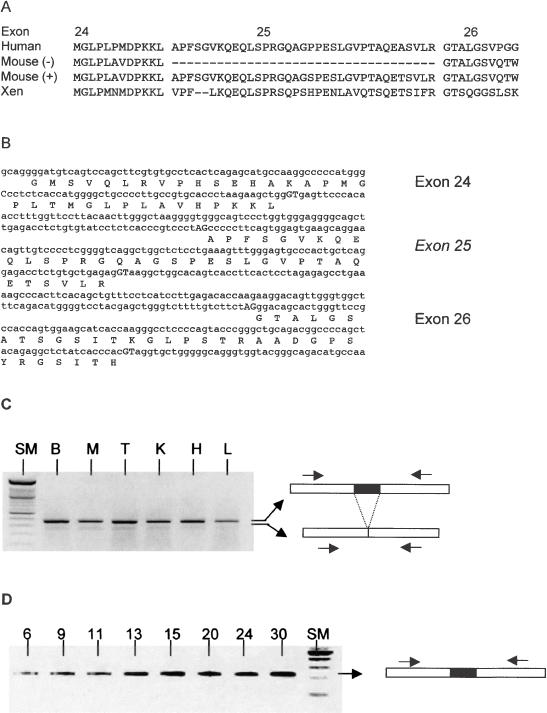Figure 2.

Exon 25 is alternatively spliced in mouse but not in Xenopus. Exon 25 is not currently annotated in the mouse genome, but can be identified and is subject to alternative splicing. (A) Alignment of exon 25 showing extensive conservation of the predicted mouse sequence with the identified sequences in Xenopus and humans. (B) Mouse genome sequence from exons 24 to 26. The intron was translated and sequence corresponding to exon 25 identified and shown to be flanked by splice acceptor (AG) and donor (GT) sequences (in upper case) (C) RT–PCR analysis of RNA from dissected mouse tissues (B = brain, M = muscle, T = testes, K = kidney, H = heart, L = liver) identifies two bands corresponding to SMRT exon 25(+) and 25(−) transcripts. (D) Just one band, corresponding to xSMRT exon 25(+) transcripts, is detected during Xenopus development (numbers represent stages of development).
